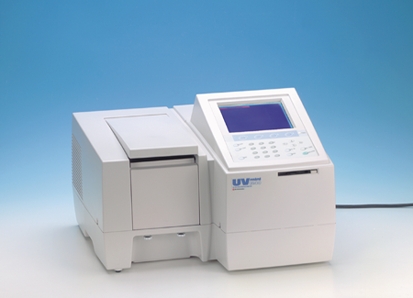Principle
The structures of molecules are not changed by their chemical environment in the gas phase. In contrast to this, on transition to the condensed phase, in dilute solution, the solvent changes the binding state of the dissolved substance. One of the way this influence makes itself shown is in the electron spectrum (solvatochromatic shift).
Benefits
- Modern spectrophotometer with display
- Spectrophotometer can be used for many other applications
- Detailed operating instructions
Tasks
- Plot UV-VIS absorption spectra of methyl orange.
- Determine the type of electron transition that causes these bands (by the decadic molar extinction coefficients).
- Plot the wavelengths of the absorption maxima in the visible range against the dielectric constants of the various solvents.
Learning objectives
- Absorption of light
- Electron excitation
- Influence of solvents
- Solvatochromic, hypsochromic and bathochromic shifts
- Lambert-Beer Law
- Decadic molar extinction coefficient
